"Bitcoin Hardware Wallets: The Ultimate 2025 Guide to Securing Your Crypto"
Get ready to dive into the world of hardware wallets with our ultimate 2025 guide! This blog post compares the top options on the market, including Trezor Model One, Trezor Model T, Trezor Safe 3, Trezor Safe 5, Ledger Nano S Plus, Ledger Nano X, Ledger Flex, Ledger Stax, BitKey, ColdCard Q, Foundation Passport, D'CENT Biometric Wallet, and SecuX W20. Discover the strengths, weaknesses, security features, and prices of each to make the best decision and protect your digital assets.
HARDWALLETS
BTC News
11/7/202518 min read


Here's a comprehensive comparison between the most famous hardware wallet models, designed to help you navigate the complex world of cryptocurrency security in 2025. As digital assets continue to gain prominence, safeguarding your investments has never been more crucial. This guide delves into the specifics of leading hardware wallets, including the Trezor Model One, Trezor Model T, Trezor Safe 3, Trezor Safe 5, Ledger Nano S Plus, Ledger Nano X, Ledger Flex, Ledger Stax, BitKey, ColdCard Q, Foundation Passport, D'CENT Biometric Wallet, and SecuX W20. We'll examine each device's basic operation, strengths, weaknesses, security protocols, and pricing to equip you with the knowledge needed to make an informed decision and fortify your crypto holdings against evolving threats.


1. Trezor Model One
Basic Operation
The Trezor Model One is the pioneer version and the most affordable model from Trezor. It is managed via the Trezor Suite. Navigation and transaction approval are done using two physical buttons. It connects via USB.
Strengths
It is the cheapest hardware wallet offered by Trezor, priced at just $49 USD. It supports just under 1,300 coins and over 8,000+ crypto assets. It is praised for its open-source software. It is extremely lightweight (12g).
Weaknesses
The Model One lacks support for several major cryptocurrencies and tokens, including ADA (Cardano), XRP (Ripple), EOS, and USDT TRC20. It shares the same 128 x 64px OLED screen size as the Nano S Plus, requiring two-button navigation. It does not contain a Secure Element Chip. Its architecture, relying on a regular microcontroller, has been shown to be vulnerable to inexpensive voltage glitching attacks that could allow the seed to be recovered if the device is stolen.
Security
Security relies on the wallet remaining offline, using a PIN code, and the open-source nature of its software, allowing for public review. It uses a mnemonic phrase (seed phrase) for recovery. The lack of a Secure Element means it does not have the bank-grade protection against physical attacks found in Ledger devices.
Price
The Trezor Model One costs $49 USD (2025).
Summary
Basic Operation: Pioneer version, uses physical buttons, managed via Trezor Suite.
Strengths: Very low price point ($59 - $69), open-source software, lightweight.
Weaknesses: No Secure Element, vulnerable to physical extraction attacks, limited coin support (missing ADA, XRP, etc.), no iPhone compatibility.
Security: High transparency (open-source), but relies on a microcontroller vulnerable to physical exploits.
Price: $49 USD (Approx. 2025).

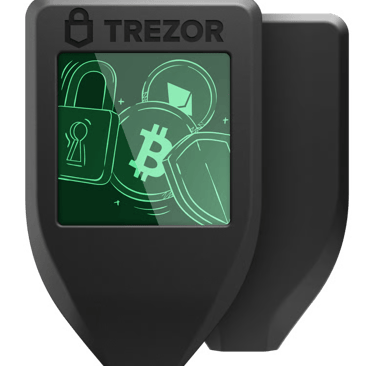
2. Trezor Model T
Basic Operation
The Trezor Model T is a high-quality hardware wallet known for its large 240 x 240 px bright color touchscreen LCD. Unlike Ledger, which requires buttons, the Model T relies on the touchscreen for interaction, which is easier to use. It connects via USB-C to Windows, Mac, Linux computers, and Android devices. It is managed using the Trezor Suite software.
Strengths
The Model T offers a user-friendly operation thanks to its touchscreen. It supports NFT storage and over 8,000+ crypto assets. Its security features include Shamir Backup (SLIP39), which allows the recovery phrase to be split into up to 16 different shares, adding resilience against loss or damage. Its transparency is a key selling point, as its software is open-source.
Weaknesses
The Model T is considered too expensive when compared to competitors like the Nano S Plus. It does not have Bluetooth connectivity or wireless charging. It is noted for its limited mobile compatibility, only supporting Android devices. It is described as having a bulky design that is hard to carry around. It lacks support for some major altcoins like Tron (meaning USDT TRC20 is not accepted).
Security
The Trezor Model T's security is based on transparency, as its software is 100% open-source. It protects private keys offline. A key differentiator is the Shamir Backup system (SLIP-39), enhancing recovery safety by splitting the recovery phrase into multiple shares. It uses a PIN code and a passphrase. However, unlike Ledger, the Model T does not use a Secure Element Chip. Earlier Trezor models (Model T and Model One) relied on a regular microcontroller, which researchers showed to be vulnerable to inexpensive physical attacks like voltage glitching that could extract the seed.
Price
The price for the Trezor Model T is $129 USD. (2025).
Summary
Basic Operation: Color touchscreen, USB-C connectivity, managed by Trezor Suite.
Strengths: Open-source software, unique Shamir Backup system for recovery resilience, user-friendly touchscreen.
Weaknesses: High price point ($179 - $219), no Secure Element, no Bluetooth, bulky design.
Security: Focuses on open-source transparency and advanced recovery (Shamir Backup), but earlier architecture was vulnerable to physical attacks.
Price: $129 USD (Approx. 2025).
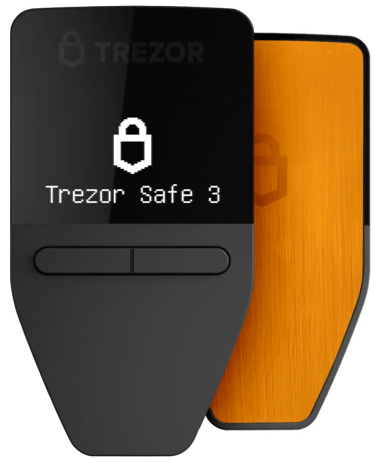

3. Trezor Safe 3
Basic Operation
The Trezor Safe 3 is the new generation hardware wallet from Satoshi Labs, combining the compact visual of the Trezor One with the advanced resources of the Trezor T. It features two physical buttons that allow the user to accept, refuse, and navigate through various options, making it independent of a connected keyboard (even for wallet recovery). It is managed using the Trezor Suite software.
Strengths
The device remains true to the open-source philosophy of Trezor. It is one of the few open-source devices to integrate an Open Source Secure Element chip (OPTIGA™ Trust M (V3)). It supports a potentially incalculable number of cryptocurrencies and tokens. It includes the famous Shamir Backup functionality (SLIP-39), allowing the recovery phrase to be encrypted and dispersed across multiple locations for high resilience. The Secure Element verifies the device's authenticity upon startup.
Weaknesses
The main drawback mentioned is its novelty. The device relies on physical button navigation, which is less intuitive than a touchscreen.
Security
The Trezor Safe 3 introduces an open-source OPTIGA™ Trust M (V3) Secure Element chip. This chip performs two main functions: it enhances the physical security of the device by adding a security layer to the PIN mechanism, and it plays an important role in verifying the device's authenticity. The open nature of the chip allows third parties to freely publish potential vulnerabilities. It supports the highly resilient Shamir Backup system (SLIP-39).
Price
The price is listed as $79 USD.
Summary
Basic Operation: Compact design, two physical buttons for navigation/confirmation, operates independently of a keyboard, uses Trezor Suite.
Strengths: Open Source Secure Element (OPTIGA™ Trust M), supports Shamir Backup, high compatibility with assets.
Weaknesses: Sales starting in 2024, relies on button input rather than touchscreen.
Security: Open Source Secure Element chip enhances PIN protection and verifies device authenticity.
Price: $79 USD (Launch in 2024).


4. Trezor Safe 5
Basic Operation
The Trezor Safe 5 is a hardware device primarily designed for desktop use, requiring a USBC cable to connect and interact with the Trezor Suite software. Its interface is managed through a responsive touchscreen. Unlike most wallets which use the 12 or 24-word BIP 39 standard, the Trezor Safe 5 uses a 20-word backup list standard (Slip 39).
Strengths
The device features a secure element, a notable improvement over previous Trezor models (Model T and Trezor 1). It is open source. The touch screen is highly responsive and makes navigation and seed entry intuitive. It is one of the most widely compatible hardware wallets with third-party software. It offers multi-share backups (Shamir Backup), allowing the user to split the recovery keys into multiple pieces for added fault tolerance and security against a single point of failure.
Weaknesses
The device is generally viewed as not super mobile friendly due to its tethered (plugged-in) primary use. Initial setup usually requires the proprietary Trezor Suite software. The use of the Slip 39 standard means its 20-word recovery phrase is not cross-compatible with many other hardware wallets (like ColdCard or Ledger) that rely on BIP 39.
Security
The Safe 5 incorporates a Secure Element chip to protect the private keys from extraction even when connected to a compromised computer. Users can set an optional passphrase to create a hidden wallet that an attacker wouldn't know existed. The multi-share backup functionality significantly increases the security and resilience of the recovery method.
Price
The approximate price for the Trezor Safe 5 is $254 USD (2025).
Summary
Basic Operation: Touchscreen, desktop-friendly, uses USBC, primarily tethered operation.
Strengths: Secure Element included, open source, supports multi-share backup for resilience.
Weaknesses: Uses 20-word Slip 39 recovery standard (limited cross-compatibility), mostly desktop tethered.
Security: Secure Element, standard and hidden passphrase wallets, multisig recovery options.
Price: ~$254 USD (Approx. 2025).
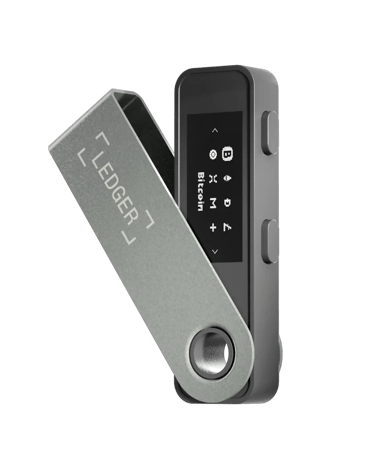

5. Ledger Nano S Plus
Basic Operation
The Ledger Nano S Plus is an improved version of the original Nano S, released in 2022, designed for secure offline storage. It is a small, lightweight device (21g) that looks like a USB stick. It features a brighter and larger screen (128 x 64px OLED) compared to the original Nano S. It must be plugged into a computer/phone via a USB-C cable to operate, as it lacks an internal battery. Navigation uses two physical buttons on top of the device.
Strengths
Its most significant advantage is its affordability, being much cheaper than the Nano X or Trezor Model T. It offers the highest level of security with the Secure Element Chip, the same found in the Nano X. It supports over 5,500 different cryptocurrencies (tokens) and up to 100 apps simultaneously, a huge upgrade from the 6-app capacity of the older Nano S. It is compatible with Windows, macOS, Linux, and Android.
Weaknesses
The Nano S Plus lacks internal battery and Bluetooth connectivity. This means it cannot connect to iPhones (iOS devices). The user must source their own USB-C to USB-C cable for Android phone connection, as the included cable is USB-C to USB-A. Entering the PIN and navigating menus using the two buttons is less easy than a touchscreen device like the Model T. It has limited storage compared to the Nano X (1.5 MB vs 2 MB).
Security
The device uses the Secure Element Chip (bank-grade chip also used in passports and credit cards). This chip ensures that private keys and data remain on the chip and are protected from laser attacks, electromagnetic tampering, and power glitches. Ledger uses a process to check that the device is genuine and untampered when connecting to Ledger Live. It uses a 24-word recovery phrase (BIP39).
Price
The Ledger Nano S Plus costs $59 USD.
Summary
Basic Operation: Tethered (USB-C), no battery/Bluetooth, utilizes two buttons for navigation, managed by Ledger Live.
Strengths: Very affordable ($79), uses CC EAL5+ Secure Element, supports 5.5K+ assets and up to 100 apps.
Weaknesses: No iPhone support (no Bluetooth), must be plugged in to operate, navigation relies on small buttons.
Security: Top-notch security using the Secure Element Chip to prevent physical key extraction.
Price: $59 USD (Approx. 2024/2025).
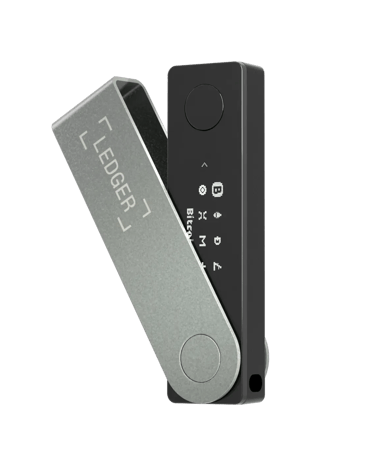

6. Ledger Nano X
Basic Operation
The Ledger Nano X is a classic backup authenticator designed for high mobility. It connects wirelessly via Bluetooth Low Energy (BLE) to iOS or Android smartphones, or tethered via USB-C to desktop or mobile devices. It is managed primarily through the Ledger Live app (available for mobile and desktop). It features a monochrome 128 x 64 px OLED screen and two physical buttons. The device is built with brushed stainless steel and plastic.
Strengths
The Nano X is highly valued for its mobility thanks to integrated Bluetooth and its broad compatibility, supporting over 5,500 cryptocurrencies across more than 50 blockchains. It has a large storage capacity, allowing users to install up to 100 cryptocurrency applications simultaneously. It features the proprietary BOLOS operating system (Ledger OS™), which isolates each application to prevent corruption from spreading. It is fully integrated with the Ledger Live ecosystem, enabling users to buy, sell, swap, and stake assets, and supports native NFT management.
Weaknesses
The Ledger Nano X does not have biometric security. Although improved over the Nano S, the screen is still relatively small compared to newer models (1.1 inches). Its battery capacity (100 mAh) provides relatively short usage time (up to 8 hours idle, or about 4 hours in use). Critical components of its firmware and the EAL5+ chip are closed-source, limiting public review compared to fully open-source competitors. There have been reported user issues regarding USB connection recognition.
Security
Security is built around the CC EAL5+ Secure Element chip (ST33J2M0), the industry standard found in passports and credit cards. This chip actively defends against physical attacks like laser probing. The device keeps private keys and the seed phrase offline. Bluetooth communication is end-to-end encrypted, and only public data is transmitted. It uses Clear Signing to display human-readable transaction details for verification before signing. Security features include a PIN code (up to eight digits) and an advanced 25th word passphrase for a hidden wallet.
Price
The price is listed as $149 USD.
Summary
Basic Operation: Mobile-focused, Bluetooth and USB-C connectivity, managed via Ledger Live.
Strengths: High mobility, vast asset support (5.5K+), BOLOS OS for app isolation, supports up to 100 apps.
Weaknesses: No biometric security, small screen, closed-source critical firmware, short battery life (100 mAh).
Security: CC EAL5+ Secure Element, passphrase hidden wallet support, Clear Signing, encrypted Bluetooth.
Price: $149 USD (2025).


7. Ledger Flex
Basic Operation
The Ledger Flex is a Ledger device featuring an E-Ink touchscreen display and a rechargeable battery. Interaction is typically done via the Ledger Live desktop application or mobile app. Connectivity options include both USBC cable and Bluetooth. The standard recovery phrase is a 24-word sequence.
Strengths
The device is praised for its solid build quality and easy-to-use application interface (Ledger Live), which tends to "handhold you the whole way through" during setup. It utilizes a Secure Element chip. Ledger devices are highly respected for their long track record and broad compatibility with numerous third-party software wallets. It offers both wired and wireless (Bluetooth) options for flexibility.
Weaknesses
Ledger devices generally support a wide array of cryptocurrencies (altcoins), which some sources suggest increases complexity and potential attack vectors compared to Bitcoin-only devices. The Ledger Live app ecosystem can sometimes be slightly confusing for an average user due to the need to install separate apps for each asset and manage accounts. When using third-party wallets like Sparrow, Ledger Live must be closed to avoid conflicts.
Security
A key security feature is the Secure Element chip, a dedicated chip that keeps the private keys segregated and safe from malware, even if the connected computer is compromised. It includes the ability to set a passphrase (often referred to as a hidden wallet) which can be linked to a separate PIN code, providing an extra layer of security.
Price
The approximate price for the Ledger Flex is $250 USD. (2025).
Resumo
Basic Operation: E-Ink touchscreen, Bluetooth/USBC connectivity, uses Ledger Live.
Strengths: Secure Element, wide compatibility, solid build, good for beginners.
Weaknesses: Supports altcoins (potential added attack vectors), Ledger Live complexity.
Security: Secure Element for key protection, supports passphrase hidden wallets.
Price: ~$250 USD (Approx. 2025).


8. Ledger Stax
Basic Operation
The Ledger Stax is a premium hardware wallet designed for high-end users, featuring the world’s first curved E Ink® touchscreen (3.7-inch display with 16 grayscale levels). It is credit card-sized (85mm x 54mm x 6mm), lightweight (45.2g), and includes embedded magnets for easy stacking. It offers flexible connectivity via Bluetooth 5.2, USB-C, and NFC. Management of the device and assets is done through the Ledger Live app. It uses a standard 24-word seed phrase backup.
Strengths
The Stax is praised for its brand-new design and high levels of customizability, allowing users to personalize the lock screen with NFTs or photos. It is one of the Ledger models that features advanced wireless charging and Bluetooth connectivity. It offers industry-leading security and seamless Ledger Live integration, enabling users to buy, sell, swap, and stake assets. It supports over 5,500 digital assets (tokens) and 100+ coins. Customers purchasing the Stax receive one Ledger Recovery Key for free. Its large screen makes transaction signing clear.
Weaknesses
The Ledger Stax’s primary drawback is its high price point. At $399 USD, it is the most expensive Ledger wallet in the current line-up. It is positioned for high-end users.
Security
The Stax is built with top-tier security. Its core is the Secure Element Chip (ST33K1M5) with CC EAL6+ certification, which is described as the highest security standard for smart cards. This chip ensures robust protection against sophisticated attacks. While the Ledger Live software is partially open-source, the firmware on Ledger devices is closed-source. Bluetooth communication is secured, as only public data is transmitted. It supports a PIN Code and a 24-word seed phrase backup.
Price
The price for the Ledger Stax is US$399.00.
Summary
Basic Operation: Premium design, 3.7" curved E Ink touchscreen, connects via USB-C, Bluetooth, and NFC.
Strengths: EAL6+ security certification, stackable design with magnets, high customizability (NFT lock screens), supports 5.5K+ assets, and includes Ledger Recovery Key.
Weaknesses: Highest price point in the Ledger lineup, making it expensive.
Security: CC EAL6+ Secure Element Chip (ST33K1M5), end-to-end encrypted communication, and PIN code protection.
Price: $399 USD (Approx. 2025).


9. BitKey
Basic Operation
The BitKey is a simplified hardware device used to secure your Bitcoin. It is designed to be completely wireless, communicating with your phone exclusively via NFC (Near Field Communication), requiring the device to be tapped to the back of the phone. The device features a fingerprint scanner for user authentication. Setup is noted for its simplicity and speed using the dedicated BitKey app. The device is charged via a USBC port. BitKey is primarily geared towards mobile use. A significant feature allows users to set a daily spending limit. Transactions below this threshold do not require the physical BitKey device but instead rely on the mobile key and BitKey’s server key.
Strengths
The BitKey’s primary appeal lies in its simplicity and ease of setup, making it ideal for newcomers to Bitcoin. It boasts a robust build quality. Crucially, the device is Bitcoin-only, which limits complexity and potential attack vectors. The code is open source and auditable, allowing users to verify its function. It includes cool baked-in inheritance related stuff designed to easily pass on key material to family.
Weaknesses
The BitKey is not recommended for advanced users who require maximum customization or technical controls. It operates exclusively with the proprietary BitKey app. A major drawback is the lack of a dedicated screen to verify transaction details independently, meaning users must trust the confirmation shown on the companion mobile app.
Security
The BitKey incorporates a Secure Element chip. It uses a 2-of-3 multisig (multiple signature) security model. The three keys involved are:
Mobile Key: Stored on the user’s phone (backed up to Google Drive).
BitKey Hardware Key: Stored on the device itself.
Server Key: Held by BitKey. This setup offers fault tolerance, as access can be recovered even if one key is lost. The server key is utilized to sign transactions below the user-set threshold.
Price
The approximate price for the BitKey is $150 USD. (2025).
Summary
Basic Operation: Wireless via NFC, uses fingerprint scanner.
Strengths: Extreme ease of use, Bitcoin-only, open-source code, includes inheritance features.
Weaknesses: Mobile-specific, lacks screen verification, relies on proprietary app.
Security: Utilizes a Secure Element and a 2-of-3 multisig structure with three separate keys.
Price: ~$150 USD (Approx. 2025).

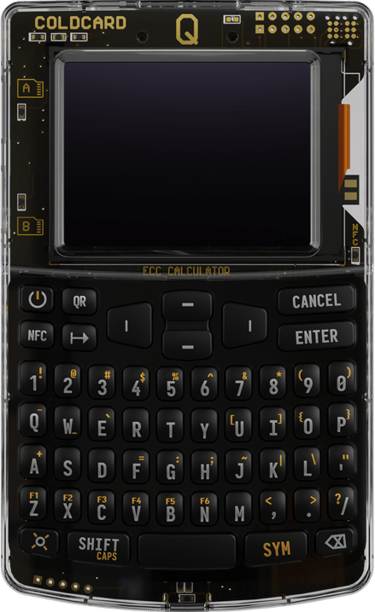
10. ColdCard Q
Basic Operation
The ColdCard Q is a high-performance hardware device frequently referred to as an "absolute Powerhouse". It features a full keyboard and a QR code scanner on top. The device is designed to be air-gapped (never connected directly to the internet) through communication methods like Micro SD cards, animated QR codes (BB QR), or NFC. It can be powered by standard AAA batteries or an optional USBC cable. The ColdCard Q does not have its own proprietary application; instead, it is used seamlessly with popular third-party wallets like Sparrow Wallet (desktop) and Nunchuk (mobile).
Strengths
The ColdCard Q is known for its robustness and extensive feature set. It supports air-gapped transactions, maximizing security by isolating the keys. The large screen and full keyboard significantly improve user experience, especially during crucial steps like setting the PIN or recovering a seed phrase. It is inherently Bitcoin-only. Advanced capabilities include support for sophisticated security measures like multisig, BIP 85 (child seed generation), duress PINs, and encrypted backups.
Weaknesses
Since it lacks a proprietary app, users must be comfortable using third-party software, making the experience potentially "choose your own adventure" in terms of complexity. Batteries and an SD card (64 GB or lower is recommended) must be acquired separately.
Security
The ColdCard Q utilizes a dual secure element system. Its core security model relies on air-gapped operation, ensuring that keys are never exposed to an online environment. The presence of a screen allows the user to verify transaction addresses and amounts directly on the device, ensuring the connected software hasn't been compromised. Advanced PIN features allow for trick/duress wallets or device bricking after too many incorrect attempts.
Price
The approximate price for the ColdCard Q is $250 USD. (2025).
Summary
Basic Operation: Air-gapped (QR, SD, NFC), battery powered, full keyboard.
Strengths: Dual Secure Element, extensive feature set (multisig, BIP 85), maximizes security via air-gapping, Bitcoin-only.
Weaknesses: No proprietary app, potentially complex setup depending on usage method.
Security: Dual Secure Element, anti-phishing words linked to PIN, duress/trick PIN capability.
Price: ~$250 USD (Approx. 2025).
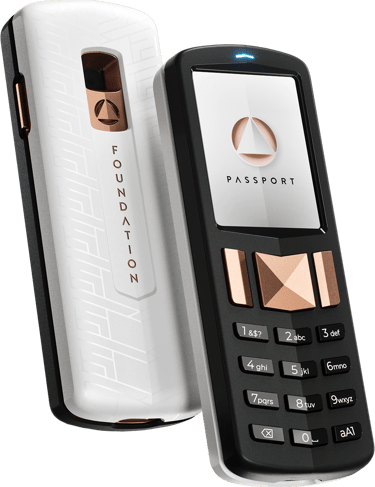

11. Foundation Passport
Basic Operation
The Foundation Passport (Batch 2) is a dedicated Bitcoin-only air-gapped signing device. It uses a camera on the back to scan QR codes for transacting, or alternatively uses a Micro SD card for transferring data. It features a physical number pad and navigation buttons. This newer batch includes a rechargeable battery and USBC charging. It can be managed via the proprietary Envoy app or third-party wallets.
Strengths
The Passport is natively Bitcoin-only, limiting complexity and security risk. Its air-gapped operation ensures private keys never touch an internet-connected device. It demonstrates good compatibility with various major third-party wallets, including Sparrow, Blue Wallet, Spectre, Wasabi, and Casa. The device has a clear screen and physical buttons for secure interaction.
Weaknesses
The device is positioned at a high price point, around $260 USD. Users may encounter occasional minor software bugs or glitches requiring a restart. The default size of QR codes generated for transaction signing can be difficult for some wallets (like Blue Wallet and Sparrow) to scan easily, often requiring manual resizing.
Security
Security is maximized through air-gapped operation (QR or SD card). The device's Bitcoin-only focus reduces the attack surface. It supports advanced features like passphrases to create hidden, entirely separate wallets based on the original seed, which significantly improves deniability if the seed is discovered. Backups can be encrypted to an SD card, requiring a separate code for decryption.
Price
The approximate price for the Foundation Passport is $260 USD.
Summary
Basic Operation: Air-gapped (QR codes/SD card), rechargeable battery, number pad.
Strengths: Bitcoin-only, high degree of security due to air-gapping, good third-party wallet compatibility.
Weaknesses: High cost, possible minor software bugs, QR code scanning issues with default settings.
Security: Air-gapped key management, supports encrypted SD card backups and hidden passphrase wallets.
Price: ~$260 USD (Approx. 2024).

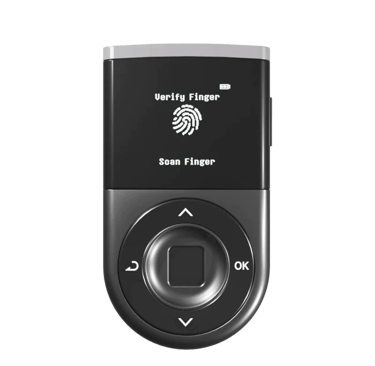
12. D'CENT Biometric Wallet
Basic Operation
The D'CENT Biometric Wallet is a hardware wallet designed to simplify secure management of digital assets, emphasizing a mobile-first experience. It features a 1.1-inch OLED screen (128 x 128 px) and uses four physical buttons for simple navigation and PIN selection. It connects to smartphones (iOS/Android) via Bluetooth or physical cable (USB-C or Micro-USB, depending on the model). Its distinguishing feature is its fingerprint scanner, which authenticates the user to unlock the device and authorize transactions. The wallet is managed through its companion mobile app.
Strengths
Its unique biometric fingerprint security offers a fast, convenient, and physically verified way to manage assets. The device boasts a long-lasting 530 mAh lithium-ion battery, significantly exceeding the Ledger Nano X's battery capacity. The device is user-friendly, featuring a large screen (1.1 inches) that makes verifying long wallet addresses much easier. It supports a wide array of cryptocurrencies: over 4,600 assets across 85+ blockchains, including major tokens (Bitcoin, Ethereum, Litecoin) and supports NFTs (ERC-721 and ERC-1155). Furthermore, D’CENT performs an automatic system check every time it powers on to ensure the firmware is authentic and has not been tampered with. It supports BIP-39 Passphrases.
Weaknesses
A major limitation is the lack of a dedicated desktop application, making it primarily suited for users who manage crypto on their smartphones. Staking is not a native option and must be done through integrated third-party tools. The wallet's code is noted as being completely closed-source, which sacrifices transparency, though it may result in tighter security. The standard 24-word phrase is the only available recovery option; D'CENT does not offer recovery services like some competitors.
Security
The D'CENT uses a CC EAL5+ Secure Element chip, which is a certified chip for high-security systems. This chip keeps private keys segregated and encrypted offline. The combination of the Secure Element and advanced fingerprint technology makes it one of the most secure cold storage hardware wallets. All data transmitted via Bluetooth is encrypted, ensuring the private key remains secure on the wallet. It utilizes a PIN Lock on the device and a Fingerprint Lock.
Price
The approximate price is $139 USD.
Summary
Basic Operation: Mobile-first design, 1.1" OLED screen, four buttons, Bluetooth/USB-C connectivity.
Strengths: Unique biometric fingerprint authentication, long 530 mAh battery life, large screen for verification, supports over 4.6K assets.
Weaknesses: No dedicated desktop application, closed-source code, relies on third-party apps for staking.
Security: CC EAL5+ Secure Element chip, biometric authentication, automatic firmware check.
Price: ~$139 USD (Approx. Oct 2025)
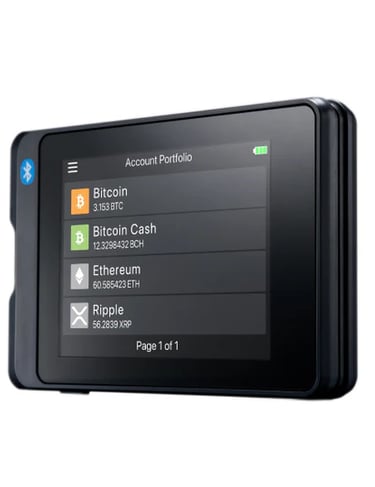

13. SecuX W20
Basic Operation
The SecuX W20 is a hardware wallet that prioritizes simplicity and usability. It is structurally and functionally identical to the W10 model but includes a rechargeable battery and Bluetooth. It features a large, colored, 2.8-inch sensitive touchscreen. It operates via Bluetooth or Micro-USB cable connection. It uses a Chrome-based web wallet platform called "SecuXcess" for transactions. It is compatible with Android, iOS (via the SecuXcess app), and desktop computers (Windows, Mac, Linux).
Strengths
The large, 2.8-inch touchscreen is cited as the biggest differentiator, offering clear visibility and high sensitivity, making it incredibly easy to use. It includes a rechargeable 600mAh battery, providing up to 7 hours of working time or at least 3 months of standby time on a full charge. It offers Bluetooth connection for mobile use. It supports over 1,000 cryptocurrencies, including native support for Cardano (ADA) and the Solana ecosystem. It features an extra security system via Bluetooth called OTP (One Time Password). It can display a receiving address on the screen for transactions without needing to be connected.
Weaknesses
The device uses a Micro-USB charging port. The device lacks water or dust resistance (no IP rating available). The user must acquire the SecuX wallet app on iOS/iPhone.
Security
The SecuX W20 is equipped with an Infineon CC EAL5+ Secure Element chip, classified as "vault-level" or "military-level" security. The private key and PIN are securely stored within this chip. It features a randomized numeric keypad for PIN entry to protect against visual observation and fingerprint tracking. The device will perform a factory reset if the incorrect PIN is entered 5 times. It supports a Hidden Wallet feature, which is a secondary "secret pocket" accessed by a different PIN and an optional passphrase. It uses the BIP32, BIP39, and BIP44 architecture, ensuring recovery on third-party wallets.
Price
The price is listed as $97 USD.
Summary
Basic Operation: Large 2.8" color touchscreen, Bluetooth/Micro-USB, uses SecuXcess web platform.
Strengths: Large, highly sensitive touchscreen, 600mAh rechargeable battery (up to 7 hours use), native support for ADA/Solana.
Weaknesses: Uses Micro-USB, not water/dust resistant.
Security: Infineon CC EAL5+ Secure Element, randomized PIN keypad, auto-reset after 5 incorrect PIN entries, Hidden Wallet feature.
Price: $97 USD
At this point, I hope you already have the elements to decide which option best suits your profile. May this guide serve as a valuable resource in your journey to secure your digital assets, empowering you to make informed decisions and confidently navigate the evolving landscape of cryptocurrency security.
